Recent Articles
Popular Makes
Body Types
2019 Porsche 911 Road Test and Review
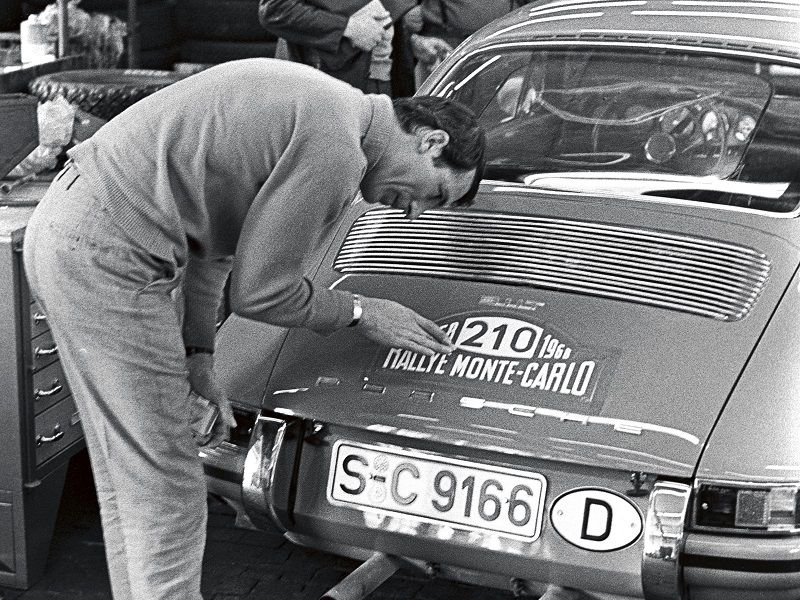
1968 Porsche 911 T Rallye Monte Carlo BW ・ Photo by Porsche
As a breed, sports cars are in something of a flux. Much of what has defined these vehicles over the prior decades is changing — manual transmissions, naturally aspirated engines, hydraulic steering, and the like. More disturbing than the phasing out of these components, however, is the broader “dumbing down” of the driving experience. Automakers appear in a mad rush to integrated precision driving tools, as they call them. In reality, these aids are more like nannies to make you look better on a canyon road or race track.
Some would argue the increase in power and torque necessitates these features, though nothing has been developed unilaterally. Output has gone up, but braking, grip, and aerodynamics have improved to equal or greater degree. Everything is still in balance. Alas, the result of all this electronic compromise is a very small sample of new, unrestricted driving experiences. One such proposition is Porsche’s 911 Carrera Touring.
911 T – Then and Now
Porsche buffs might get a little misty-eyed to see a brand-new 911 T; the nameplate hasn’t seen fresh air since 1973. Introduced as a stripped-down, lower-cost 911 in 1968, the Touring trim used the same 2.0-liter flat-four engine as the standard car, but it produced less power (110 horsepower at the time). As the rest of the 911 range grew more powerful and sophisticated, the 911 T followed, but always at a step behind on performance.
The spirit of the original 911 T certainly remains in the new model, though the recipe has changed a bit. No longer the entry-level Carrera, the new T is $11,000 more expensive than the base 911, comes with a handful of performance upgrades, and makes the same output. Nothing is really “missing” here, except for a few pounds shed through weight-saving techniques. The new 911 T, then, isn’t alike its predecessor on paper, but the purity of its driving experience is a clear nod to its heritage.
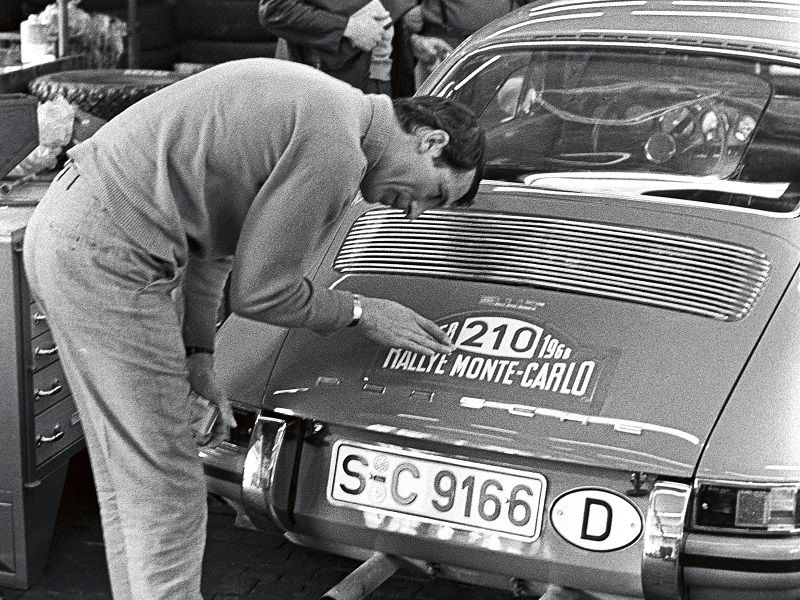
Photo by Porsche
Exterior Styling
Unlike most sports cars, much of what makes the Porsche 911 so iconic is not how its design has transformed over the years, but rather how little it has changed. From the original 901 generation that debuted at the 1963 Frankfurt Motor Show to present day, Porsche has strictly maintained the 911’s shape. If changes between entire generations of the 911 are relatively subtle, then, it is no surprise the mild tweaks to the 2019 911 Carrera T require careful study to pick out its unique details.
The 911 T features Agate Gray paint for the rear badges, sport design mirrors, engine grille cover, sport exhaust, rear fascia, 20-inch Carrera S wheels, and badging along the door panels. These details are more easily recognizable on our Racing Yellow test vehicle or other brightly painted examples, but they're more muted against darker exteriors.
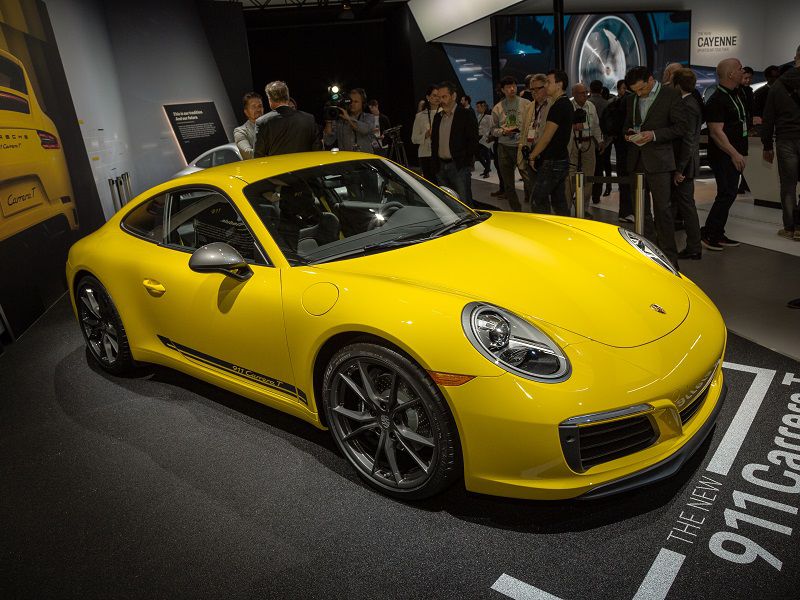
Photo by Porsche
Interior Comfort
Alcantara is to the 911 Carrera T’s interior what Agate Gray is to its exterior. This microfiber suede material lines the steering wheel, gear selector, seat inserts, headliner, and door inserts. Why so much Alcantara? Porsche and other manufacturers use this material in race cars for enhanced grip compared to plastic, metal, or leather. In consumer products, therefore, Alcantara adds a motorsports-derived sportiness to the cabin.
Other sporty touches include a smaller-diameter GT Sport steering wheel, an analog clock mounted to the dashboard (part of the standard Sport Chrono package), a drive mode selector extending from the wheel, four-way electronically adjustable Sport Plus seats (or optional carbon fiber buckets), door opener loops (instead of metal handles), and lightweight window glass. The standard chairs strike an excellent balance between support and enduring comfort, while the buckets are far more rigid and aggressively bolstered. If you anticipate taking your 911 T to the track often, Porsche will also delete the rear seats to save weight (44 lbs) and increase interior storage to a total of 14 cubic feet, including beyond the front trunk.

Photo by Porsche
Convenience and Safety Features
The 911 Carrera T comes standard with a 7-inch touchscreen and a reconfigurable 4.6-inch digital driver display, which together incorporate navigation, multimedia, telemetry, and smartphone integration as part of the Porsche Communication Management system. Bluetooth, XM radio, HD radio, and Apple CarPlay are part of every 911 T, but Android Auto isn’t available. Porsche's PCM infotainment setup is one of the most intuitive systems among luxury and non-luxury products, with a logical menu structure and necessary redundancies.
Other standard convenience features include an eight-speaker sound system, two USB ports, two SD card slots, heated side mirrors, rain-sensing windshield wipers, parking sensors, a backup camera, dual-zone automatic climate control, and bi-xenon headlights. Porsche also offers a number of available extras like seat and steering wheel heating, seat ventilation, adaptive cruise control, lane-change assistance, auto-dimming mirrors, and keyless entry and drive.
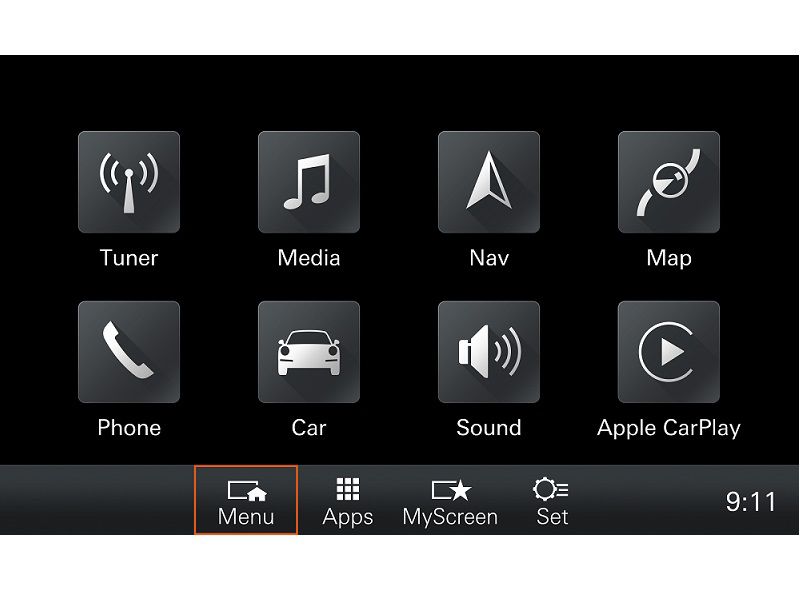
Photo by Porsche
Powertrain and Fuel Economy
The 911 T shares its engine with the base Carrera: a 3.0-liter twin-turbocharged flat six-cylinder with 370 hp and 331 lb-ft of torque that extends over the rear axle. A seven-speed manual or dual-clutch automatic (PDK) gearbox send power to the rear wheels. Manual-equipped 911 T models feature a modified constant transaxle ratio for improved acceleration over the standard Carrera, plus a shortened gearshift. It goes from 0 to 60 mph in just 4.3 seconds, and top speed is 182 mph. Thee PDK gains launch control, bringing the 0-60 mph time down to 4.0 seconds.
Apart from a relatively distilled engine noise compared to naturally aspirated 911s of yore, this twin-turbocharged powertrain is brilliant. Smooth, abundant power (seemingly more than the claimed figures) is available across much of the rev range. The manual is a joy to operate, with short, precise throws and a clear clutch engagement point. The PDK, meanwhile, is splendidly versatile. In normal drive mode, it feels just like a typical automatic. Sport and sport plus modes, however, afford rapid-fire shifts and can hold gears right up to redline. The 911 T's fuel economy should mirror the base Carrera’s combined ratings of 23 mpg with the manual and 25 mpg with the PDK.

Photo by Porsche
Driving Dynamics
Porsche leans heavy on the Touring element of the 911’s name, promising lasting comfort as owners explore the twistier bits of this nation’s roadways. Our time behind the wheel covered 150 miles of Northern California’s winding, undulating off-highway stretches. Here, we prodded the 911 T and its assortment of performance goodies to see if either comfort or composure would give way.
Not a chance. The 911 T is a master class in cornering stability, balance, brake feel, and steering feedback. As Porsche’s icon inhales tarmac, it provides the driver with endless confidence. Standard active damping, stiffer springs, improved aerodynamics, stiffer anti-roll bars, and torque vectoring both settle the chassis and put power where it’s most effective. Optional rear-wheel steering seems to lengthen the wheelbase and improve stability. The 911 T also features Porsche’s variable traction control system. A single press of the PSM button allows some wheelspin and increased lean angle. A long hold completely disables the system, putting complete control in the driver’s hands.
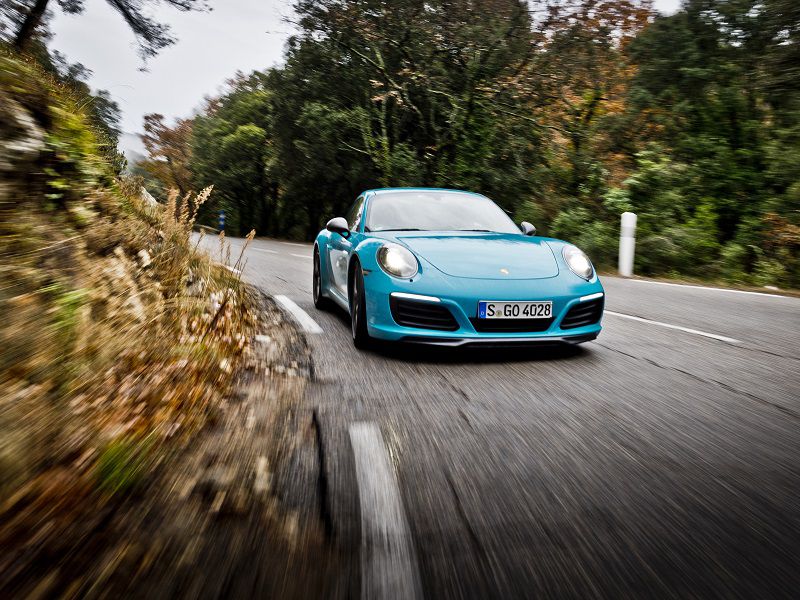
Photo by Porsche
Pricing and Packages
The 911 Carrera T is priced from $102,100 for the seven-speed manual, or $105,830 for the PDK, plus a $1,050 destination charge. This starting figure is $11,000 more expensive than the base 911 Carrera.
Porsche offers many standalone options, but only two packages, both of which require the addition of 18-way power adjustable sport seats ($2,640). The Premium Package ($860) includes dynamic lighting, auto-dimming mirrors, and heated front seats. The Premium Plus Package ($4,190) adds LED headlights, seat ventilation, keyless entry and drive, and ambient interior lighting.
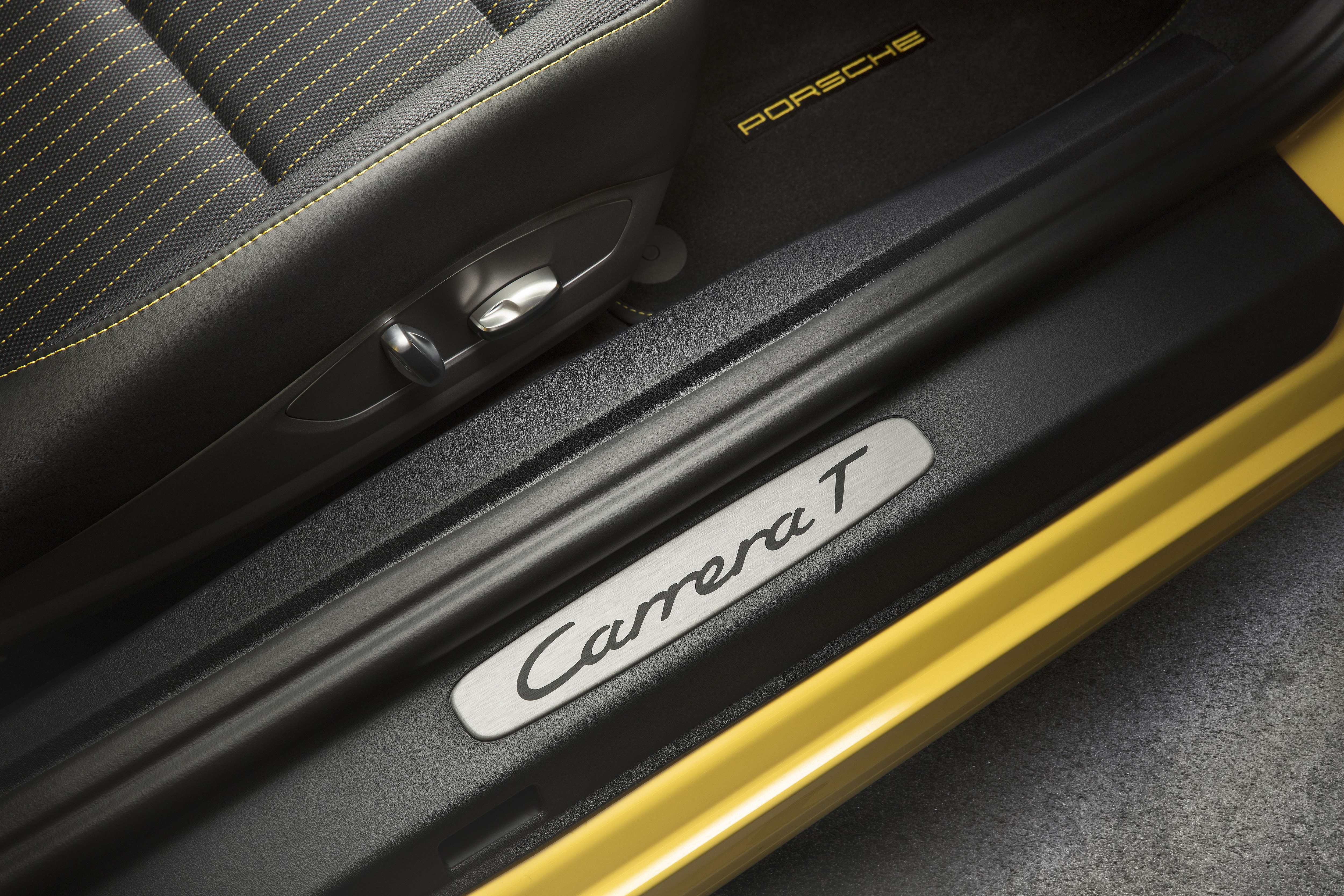
Photo by Porsche
Highs and Lows
Highs: - Usable power in every gear and all over the rev range - Sublime manual gearbox with short, precise throws - Smooth, stable cornering to accompany sharp steering response - Subtle exterior details set the T apart from the 911 range
Lows: - Deleting the rear seat requires a set of uncomfortable bucket seats
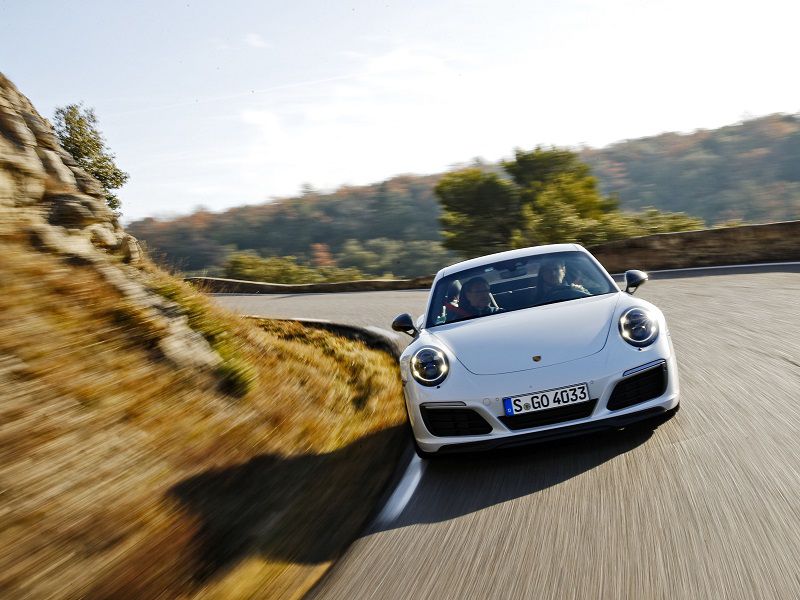
Photo by Porsche
Competition
Even icons have competition. In the case of the 911 T, there are three key rivals: the Jaguars F-Type R-Dynamic, the Mercedes-AMG GT, and the Audi R8. For a bargain in this segment, Jaguar’s F-Type deeply undercuts its competitors at $82,050. The AMG GT costs about the same as the 911, is bit more exotic-looking, and produces more power. The $138,700 Audi R8 is the only all-wheel drive car of the set, produces 170 more horsepower than the 911, and is quickest to 60 mph.

Photo by Jaguar
Our Take
While it appears the 911 T has no clear advantage over its closest rivals in straight-line performance, value, or features, it is unmatched as a driver’s car. Each minute at the helm of the 911 solidifies in one’s mind Porsche’s engineering expertise.
Unlike each of its competitors, the 911 lacks any perceptible flaw; every element of the car’s driving behavior is refined beyond reproach. Perhaps, in time, Mercedes-AMG, Audi, and Jaguar will hone their sports cars to similar levels, but Porsche will have used that same interval to fine-tune the 911 even further. Styling and price may lure buyers to other products, but driving engagement will never be in want.
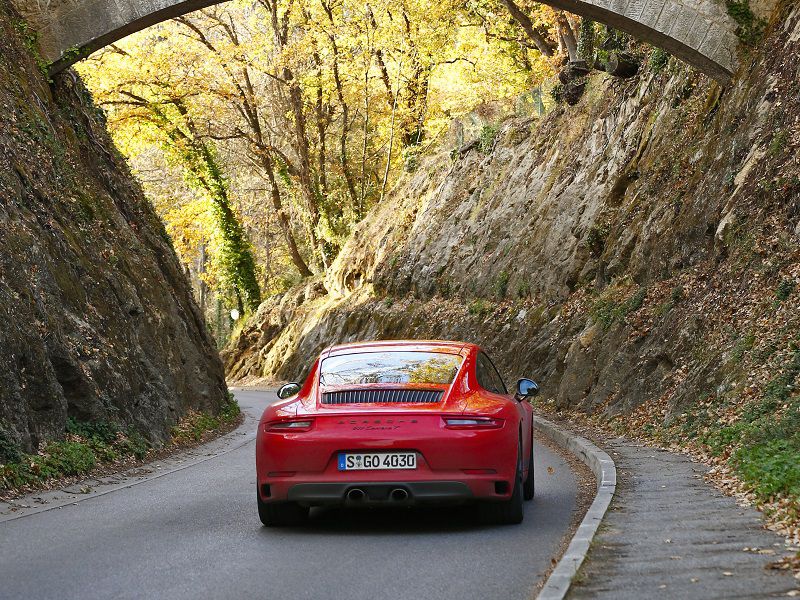
Photo by Porsche